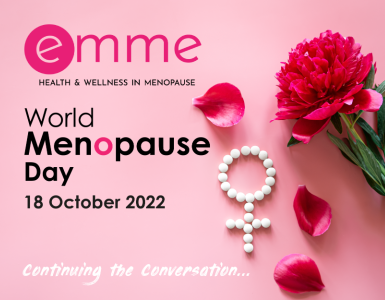Yoga has long been associated with a reduction of emotional and physical symptoms of the menopause
We wanted to know why and so turned to Dr Lydia to share with us explore the specific benefits of Restorative Yoga and how it might help us to navigate our menopause.
What is Restorative Yoga?
I have recently trained to teach Restorative Yoga and find that some of its ideas and benefits are muscling in on my regular yoga practice and teaching. My students love its meditative quality. Restorative Yoga is a form of deep relaxation. There is no movement involved except getting in and out of position or moving from one posture to another. Classes typically run for 30 to 60 mins with an average of 3-5 postures per session.
What is the key principle?
Unlike other forms of yoga, there is no exercise and no sense of pull on the muscles. In regular mat yoga, we stretch different muscle groups; in Yin yoga we relax but gravity gently pulls our muscles in a particular direction.
Restorative yoga is a kind of whole-body meditation. It invites us to withdraw our senses from the outside world, a little like a tortoise retiring into its shell. (Ashtanga yogis call this Pratyahara.) In effect we are awake but in a restful state. Imagine that moment when you first wake up; before the tasks of the day flood your mind, there is a moment of wakeful rest. Here the brain generates alpha waves which calm the body and the worry circuits of the mind; they might also boost your creativity. A second kind of brainwave that often occurs during Restorative Yoga are theta waves. These are naturally generated when we are in light sleep or just before we fall asleep; therefore, there is a wakeful quality to this state as well. Theta brainwave activity stimulates rejuvenation and healing.
What does it feel like to do Restorative Yoga?
Restorative Yoga is prop-heavy yoga, the more bolsters, cushions, rugs and pillows you have, the better! If you have ever rested in a floating armchair in a swimming pool and gained that sense of weightlessness, that’s the nearest real-life physical sensation that I can equate it to. Your yoga teacher or yoga therapist will help to arrange you in a position where all of your body is supported and all of your joints are in flexion. This recreates our position as we were in the womb and research suggests that we have an unconscious memory of that time. As adults we may intellectualise this a little more and experience feelings of safety, being watched over and free from constraint.
What are the specific benefits for perimenopausal and menopausal women?
Restorative Yoga has been reported to bring about a 30% reduction in hot flushes and a 34% decrease in hot flush intensity. Menopause can also really disrupt the way we feel about our physicality often leading to a strained or challenged relationship with the body. In a recent research study, yoga practitioners describe one of the most positive benefits as an improvement of the connection they have with their physical self, particularly in their sense of attractiveness.
Is there a peak posture in Restorative Yoga?
Restorative Yoga has postures where you lie on your front, your side or your back. But perhaps the one that I (and my students) enjoy most is a reclining version of baddha konasana, which you might know better as cobbler pose, butterfly pose or bound angle pose. This is especially good for soothing menopausal symptoms as it stimulates all the organs in your abdomen (including the ovaries, the bladder and the kidneys) as well as your circulation.
It is most important that you use supports for your back, your thighs and arms. Remember there is no physical pull in Restorative Yoga. Crucially, your neck needs to be in a straight line with your spine. This is why it would be hard to do Restorative Yoga by yourself because what feels straight to you might just be a product of your body habits. A trained yoga teacher or therapist will be able to see alignments that will make you even more comfortable.
And finally
Ask your regular yoga teacher if they offer Restorative Yoga or if they can recommend a class that they attend themselves. I’d highly recommend you give this type of yoga a try as it is an ultimate expression of self-care and self-kindness.
Thank you to the fantastic Dr Lydia, a co-partner of Everyday a Mindful Day where she and her husband offer online courses in mindfulness, yoga and well-being. Dr Lydia E (PhD., BSc., BA., BAMBA-listed is a mindfulness teacher, yoga teacher of mat, chair and restorative yoga.
















